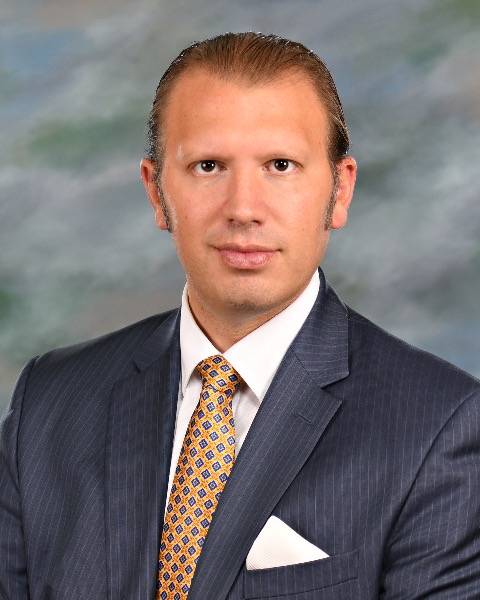Spine
If Not Now, When?: A Comparative Analysis of Early-Term Versus Late-Term Complication Rates Following Adult Spinal Deformity Surgery
If Not Now, When?: A Comparative Analysis of Early-term versus Late-term Complication Rates Following Adult Spinal Deformity Surgery

Peter G. Passias, MD
Professor
Duke University
Duke University Heath System
New Canaan, CT, US
Presenting Author(s)
Introduction: Adult spinal deformity(ASD) corrective surgery is a highly invasive procedure portending patients to immediate and long-term complications. It remains to be established which complications are more prevalent after two years. We sought to compare the rates of certain complications before and after two years following ASD surgery.
Methods: ASD patients with 3-5-year data included. Complication groups defined as follows: 1) any complication,2) major,3) medical [cardiac event,ileus,etc.],4) mechanical [implant failure,rod fracture,etc.], 5) radiographic [proximal junctional kyphosis(PJK),pseudarthrosis,adjacent segment disease], and 6)reoperation. Complications were stratified by occurrence before or after two years(2Y) postoperatively. Multivariable logistic regression analysis adjusting for age and invasiveness determined likelihood of the occurrence for certain complications before or after two years.
Results: 481 ASD patients included, with an average age of 59±15 years, predominantly female(77%) and a high CCI(1.7±1.7). By 2Y, complication rates: 74% ≥1 complication,19% major,17% medical,13% neurological,46% radiographic,15% mechanical, and 20% required reoperation. After 2Y, complication rates: 19% ≥1 complication,3% major,0.4% medical,1% neurological,17% radiographic,3% mechanical, and 1.5% required reoperation. Radiographic and mechanical complications had the highest proportional rates after 2Y at 23% and 18%, respectively. This translated to 75% of all complications occurring after 2Y to be mechanical- or radiographic-related. The cause of major complication after 2Y was more likely mechanical(OR: 148,[37-598];p <.001), in addition to the indication for reoperation after 2Y(OR: 51,[10-255];p <.001). Patients suffering radiographic complications after 2Y were less likely to have suffered radiographic complications before 2Y(OR: 5,p <.001). Patients suffering major complications or reoperations before 2Y were not more likely to develop any certain complication after 2Y(all p>.05). Patients developing major complications after 2Y had higher rates of each complication prior to 2Y(all p<.05), but those undergoing reoperation after 2Y were only predicted by PJF(OR: 6,[1.1-37.1]) prior to 2Y.
Conclusion : Mechanical and radiographic complications occur 3x more often than any other complications after two years postoperatively. This study increases our understanding of the complications occurring later in the postoperative course, along with early-term correlates, to better aid the spine deformity surgeon during postoperative monitoring and management.
Methods: ASD patients with 3-5-year data included. Complication groups defined as follows: 1) any complication,2) major,3) medical [cardiac event,ileus,etc.],4) mechanical [implant failure,rod fracture,etc.], 5) radiographic [proximal junctional kyphosis(PJK),pseudarthrosis,adjacent segment disease], and 6)reoperation. Complications were stratified by occurrence before or after two years(2Y) postoperatively. Multivariable logistic regression analysis adjusting for age and invasiveness determined likelihood of the occurrence for certain complications before or after two years.
Results: 481 ASD patients included, with an average age of 59±15 years, predominantly female(77%) and a high CCI(1.7±1.7). By 2Y, complication rates: 74% ≥1 complication,19% major,17% medical,13% neurological,46% radiographic,15% mechanical, and 20% required reoperation. After 2Y, complication rates: 19% ≥1 complication,3% major,0.4% medical,1% neurological,17% radiographic,3% mechanical, and 1.5% required reoperation. Radiographic and mechanical complications had the highest proportional rates after 2Y at 23% and 18%, respectively. This translated to 75% of all complications occurring after 2Y to be mechanical- or radiographic-related. The cause of major complication after 2Y was more likely mechanical(OR: 148,[37-598];p <.001), in addition to the indication for reoperation after 2Y(OR: 51,[10-255];p <.001). Patients suffering radiographic complications after 2Y were less likely to have suffered radiographic complications before 2Y(OR: 5,p <.001). Patients suffering major complications or reoperations before 2Y were not more likely to develop any certain complication after 2Y(all p>.05). Patients developing major complications after 2Y had higher rates of each complication prior to 2Y(all p<.05), but those undergoing reoperation after 2Y were only predicted by PJF(OR: 6,[1.1-37.1]) prior to 2Y.
Conclusion : Mechanical and radiographic complications occur 3x more often than any other complications after two years postoperatively. This study increases our understanding of the complications occurring later in the postoperative course, along with early-term correlates, to better aid the spine deformity surgeon during postoperative monitoring and management.

.jpg)